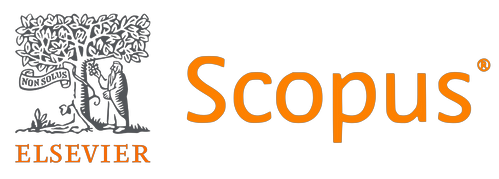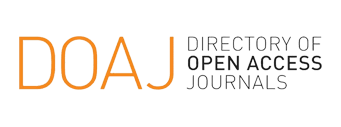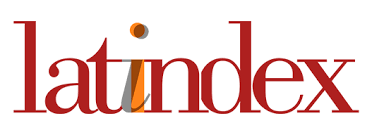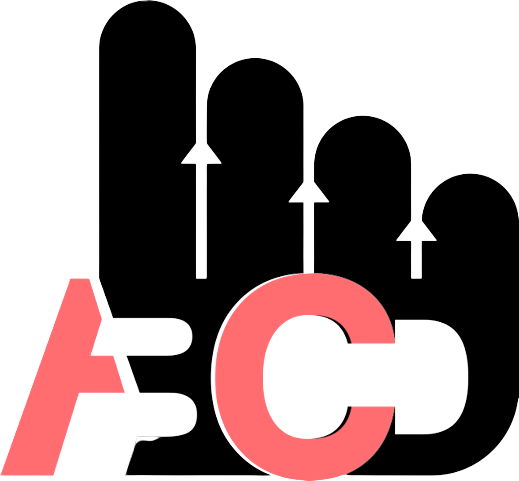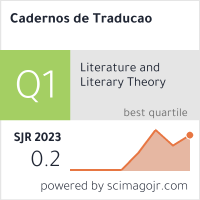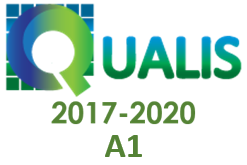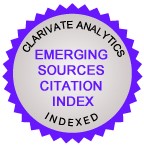Toward a so-called narrow redefinition of translation in Translation Studies
DOI:
https://doi.org/10.5007/2175-7968.2025.e100385Palavras-chave:
adaptation studies, semiotics, definitions of translation, conceptual stretching, multimodalityResumo
With this paper, I aim to show that the central concept of Translation Studies (TS), i.e., “translation”, should be (re)defined “narrowly” as “the process or result of transferring a text interlinguistically”. First, I examine three noteworthy conceptualizations of translation found in TS literature (i.e., Jakobson’s, Toury’s, and Meylaerts & Marais’s). Second, I problematize the notion of “intrasemiotic translation” together with other relevant concepts and thereby highlight terminological as well as conceptual issues surrounding the idea of “translation” in TS. Third, invoking various arguments, I build a case for a so-called narrow and a priori definition of “translation”. Fourth, I give an example of such a definition and further develop my position. Fifth, broadening the scope of the study, I propose that we should keep looking for an overarching concept and discipline that would encompass “translation” as well as other similar objects and phenomena. Last, before wrapping up with concluding remarks, I indicate possible avenues to explore in future studies.
Referências
Adami, E. (2023). A Social Semiotic Multimodal Approach to Translation. In R. Meylaerts & K. Marais (Eds.), The Routledge Handbook of Translation Theory and Concepts (pp. 369–388). Routledge. https://doi.org/10.4324/9781003161448-23
Bassnett, S., & Pym, A. (2017). On the Direction of Translation Studies. Cultus, 10(1), 145–152.
Blumczynski, P. (2023). ‘Many Different Practices, One Name’. A Semasiological Counterweight to an Onomasiological Approach in Search for a Fuller Phenomenology of Translation. Perspectives, 1–15. https://doi.org/10.1080/0907676X.2023.2268138
Boyd, B. (2017). Making Adaptation Studies Adaptive. In T. Leitch (Ed.), The Oxford Handbook of Adaptation Studies (pp. 587–606). Oxford University Press. https://doi.org/10.1093/oxfordhb/9780199331000.013.34
Bueno Maia, R., Pięta, H., & Assis Rosa, A. (2018). Translation and Adjacent Concepts. In L. D’Hulst, & Y. Gambier (Eds.), History of Modern Translation Knowledge: Sources, Concepts, Effects (pp. 75–83). John Benjamins. https://doi.org/10.1075/btl.142.08mai
Carvalho, M. M., & Lourenço, G. (2023). Is this Translation or Not? A Review (and a Reformulation) of the Concept of Intralingual Translation. Cadernos de Tradução, 43(1), 1–28. https://doi.org/10.5007/2175-7968.2023.e94351
Cattrysse, P. (2019). Adaptation Studies, Translation Studies, and Interdisciplinarity. Reflections on Siblings and Family Resemblance. Adaptation, 12(3), 206–221. https://doi.org/10.1093/adaptation/apy011
Cattrysse, P. (2020). Translation and Adaptation Studies: More Interdisciplinary Reflections on Theories of Definition and Categorization. TTR, 33(1), 21–53. https://doi.org/10.7202/1071147ar
Chesterman, A. (2017). Reflections on Translation Theory: Selected Papers 1993–2014. John Benjamins. https://doi.org/10.1075/btl.132
Chesterman, A. (2019). Moving Conceptual Boundaries: So What? In H. V. Dam, M. N. Brøgger, & K. K. Zethsen (Eds.), Moving Boundaries in Translation Studies (pp. 12–25). Routledge. https://doi.org/10.4324/9781315121871-2
Collier, D., & Levitsky, S. (1997). Democracy with Adjectives: Conceptual Innovation in Comparative Research. World Politics, 49(3), 430–451.
Collier, D., & Mahon Jr, J. E. (1993). Conceptual ‘Stretching’ Revisited: Adapting Categories in Comparative Analysis. American Political Science Review, 87(4), 845–855. https://doi.org/10.2307/2938818
Corrigan, T. (2017). Defining Adaptation. In T. Leitch (Ed.), The Oxford Handbook of Adaptation Studies (pp. 23–35). Oxford University Press. https://doi.org/10.1093/oxfordhb/9780199331000.013.1
Dam, H. V., & Zethsen, K. K. (2019). ‘Professionals’ Views on the Concepts of their Trade: What Is (Not) Translation? In H. V. Dam, M. N. Brøgger & K. K. Zethsen (Eds.), Moving Boundaries in Translation Studies (pp. 200–219). Routledge. https://doi.org/10.4324/9781315121871-13
Dam, H. V., & Zethsen, K. K. (2024). Professionals’ Views on the Concepts of Translation: The Challenge of Categorisation. The Translator, 30(3), 388–406. https://doi.org/10.1080/13556509.2024.2320953
Dam, H. V., Brøgger, M. N., & Zethsen, K. K. (2019). Moving Boundaries in Translation Studies: Insights and Prospects. In H. V. Dam, M. N. Brøgger & K. K. Zethsen (Eds.), Moving Boundaries in Translation Studies (pp. 231–233). Routledge. https://doi.org/10.4324/9781315121871-15
Elleström, L. (2017). Adaptation and Intermediality. In T. Leitch (Ed.), The Oxford Handbook of Adaptation Studies (pp. 509–526). Oxford University Press. https://doi.org/10.1093/oxfordhb/9780199331000.013.29
Elliott, K. (2020). Theorizing Adaptation. Oxford University Press. https://doi.org/10.1093/oso/9780197511176.001.0001
Even-Zohar, I. (1981). Translation Theory Today: A Call for Transfer Theory. Poetics Today, 2(4), 1–7. https://doi.org/10.2307/1772481
Gambier, Y. (2018). Concepts of Translation. In L. D’hulst & Y. Gambier (Eds.), History of Modern Translation Knowledge: Sources, Concepts, Effects (pp. 19–38). John Benjamins. https://doi.org/10.1075/btl.142.02gam
Gambier, Y. (2023). The Conceptualisation of Translation in Translation Studies: A Response. Translation Studies, 16(2), 317–322. https://doi.org/10.1080/14781700.2023.2209576
Gottlieb, H. (2005). Multidimensional Translation: Semantics turned Semiotics. In H. Gerzymisch-Arbogast & S. Nauert (Eds.), MuTra: Challenges of Multidimensional Translation (pp. 33–61). Advanced Translation Research Center, Saarland University.
Gottlieb, H. (2018). Semiotics and Translation. In K. Malmkjær (Ed.), The Routledge Handbook of Translation Studies and Linguistics (pp. 45–63). Routledge. https://doi.org/10.4324/9781315692845-4
Halverson, S. (1999). Conceptual Work and the ‘Translation’ Concept. Target, 11(1), 1–31. https://doi.org/10.1075/target.11.1.02hal
Harris, B. (2016). Translating as Conversion. Unprofessional Translation. https://unprofessionaltranslation.blogspot.com/2016/09/translating-as-conversion.html
Hermans, T. (2013). What is (not) Translation? In C. Millán & F. Bartrina (Eds.), The Routledge Handbook of Translation Studies (pp. 75–87). Routledge. https://doi.org/10.4324/9780203102893-8
House, J. (2015). Translation Quality Assessment: Past and Present. Routledge. https://doi.org/10.4324/9781315752839
Jakobson, R. (1959). On Linguistic Aspects of Translation. In R. A. Brower (Ed.), On Translation (pp. 232–239). Harvard University Press. https://doi.org/10.4159/harvard.9780674731615.c18
Kaindl, K. (2013). Multimodality and Translation. In C. Millán & F. Bartrina (Eds.), The Routledge Handbook of Translation Studies (pp. 257–269). Routledge. https://doi.org/10.4324/9780203102893-23
Kourdis, E. (2015). Semiotics of Translation: An Interdisciplinary Approach to Translation. In P. P. Trifonas (Ed.), International Handbook of Semiotics (pp. 303–320). Springer. https://doi.org/10.1007/978-94-017-9404-6_13
Kress, G. (2010). Multimodality: A Social Semiotic Approach to Contemporary Communication. Routledge. https://doi.org/10.4324/9780203970034
Kwok, S. (2022). Contracting, Expanding and Integrating Translation: Who and Where to Draw the Line. Fórum Linguístico, 19, 7226–7247. https://doi.org/10.5007/1984-8412.2022.e84050
Levin, S. (2021). Heeding the Call for Transfer Theory. In L. van Doorslaer & T. Naaijkens (Eds.), The Situatedness of Translation Studies: Temporal and Geographical Dynamics of Theorization. (pp. 87–104). Brill. https://doi.org/10.1163/9789004437807_006
Litwin, M. (2023). The Jakobson Controversy: Toward an Understanding of the Glottocentric Drift in Translation Studies. Translation Studies, 17(2), 199–215. https://doi.org/10.1080/14781700.2023.2210584
Marais, K. (2021). ‘Eleven Different Names, One Practice’: Towards a Phenomenology of Translation. Perspectives, 29(3), 311–325. https://doi.org/10.1080/0907676X.2020.1726419
Marais, K. (2024). Levels of Translation, Levels of Freedom? In A. A. Sharov & G. E. Mikhailovsky (Eds.), Pathways to the Origin and Evolution of Meanings in the Universe (pp. 401–418). https://doi.org/10.1002/9781119865667.ch19
Meylaerts, R., & Marais, K. (2023a). Introduction. In R. Meylaerts & K. Marais (Eds.), The Routledge Handbook of Translation Theory and Concepts (pp. 1–9). Routledge. https://doi.org/10.4324/9781003161448
Meylaerts, R., & Marais, K. (Eds.). (2023b). The Routledge Handbook of Translation Theory and Concepts. Routledge. https://doi.org/10.4324/9781003161448
Moreno Tovar, M., & van Doorslaer, L. (2024). Blurring Borders in Intralingual Translation Research: The Case of Journalistic Translation. Perspectives, 1–17. https://doi.org/10.1080/0907676X.2024.2365867
Mossop, B. (2016). ‘Intralingual Translation’: A Desirable Concept? Across Languages and Cultures, 17(1), 1–24. https://doi.org/10.1556/084.2016.17.1.1
Mossop, B. (2019). ‘Intersemiotic Translating’: Time for a Rethink? Translation and Interpreting Studies, 14(1), 75–94. https://doi.org/10.1075/tis.00031.mos
Olalla-Soler, C., Aixelá, J. F., & Rovira-Esteva, S. (2022). Fifty Years of Hectic History in Translation Studies. In J. F. Aixelá & C. Olalla-Soler (Eds.), 50 Years Later. What Have We Learnt after Holmes (1972) and Where Are We Now? (pp. 12–37). Universidad de Las Palmas de Gran Canaria. https://doi.org/10.20420/1699.2022.646
Pérez González, L. (2014). Multimodality in Translation and Interpreting Studies: Theoretical and Methodological Perspectives. In S. Bermann & C. Porter (Eds.), A Companion to Translation Studies (pp. 119–131). John Wiley & Sons. https://doi.org/10.1002/9781118613504.ch9
Petrilli, S. & Zanoletti, M. (2023). Intersemiotic Approaches. In R. Meylaerts & K. Marais (Eds.), The Routledge Handbook of Translation Theory and Concepts (pp. 340–368). Routledge. https://doi.org/10.4324/9781003161448-22
Pöchhacker, F. (2024). Is Machine Interpreting Interpreting? Translation Spaces, 1–21. https://doi.org/10.1075/ts.23028.poc
Pym, A. (2010). Translation Après Coup: On Why Translation Studies has a Specific Object. In C. Pagnoulle (Ed.), Sur le fil — traducteurs et éthique, éthiques du traducteur (pp. 10–20). Université de Liège.
Raw, L. (2017a). Adaptation Today. Literature/Film Quarterly, 45(2), 1–4.
Raw, L. (2017b). Aligning Adaptation Studies with Translation Studies. In T. Leitch (Ed.), The Oxford Handbook of Adaptation Studies (pp. 494–508). Oxford University Press. https://doi.org/10.1093/oxfordhb/9780199331000.013.28
Regattin, F. (2024). Les limites de la traductologie : une contribution à une histoire des élargissements de la discipline [“The boundaries of translation studies: a contribution to a history of the expansions of the discipline”]. Les Cahiers Anne Hébert, (19), 101–115. https://doi.org/10.7202/1109944ar
Rubio, D. M., Schoenbaum, E E., Lee, L. S., Schteingart, D. E., Marantz, P. R., Anderson, K. E., Platt, L. D., Baez, A., & Esposito, K. (2010). Defining Translational Research: Implications for Training. Academic Medicine, 85(3), 470–475. https://doi.org/10.1097/ACM.0b013e3181ccd618
Sakellariou, P. (2012). The Semiotic Status of Interlingual Subtitling. Meta, 57(3), 677–693. https://doi.org/10.7202/1017086ar
Sartori, G. (1970). Concept Misformation in Comparative Politics. American Political Science Review, 64(4), 1033–1053. https://doi.org/10.2307/1958356
Schäffner, C. (2013). Trans-language, Trans-culture, Trans-translation? In J. Zehnalová, O. Molnár, & M. Kubánek (Eds.), Tradition and Trends in Trans-Language Communication (pp. 15–28). Palacký University.
Stecconi, U. (2007). Five Reasons Why Semiotics is Good for Translation Studies. In Y. Gambier, M. Shlesinger & R. Stolze (Eds.), Doubts and Directions in Translation Studies: Selected Contributions from the EST Congress, Lisbon 2004 (pp. 15–26). John Benjamins. https://doi.org/10.1075/btl.72.05ste
Stöckl, H. (2004). In between Modes: Language and Image in Printed Media. In E. Ventola, C. Charles & M. Kaltenbacher (Eds.), Perspectives on Multimodality (pp. 9–29). John Benjamins. https://doi.org/10.1075/ddcs.6.03sto
Sütiste, E., & Torop, P. (2007). Processual Boundaries of Translation: Semiotics and Translation Studies. Semiotica, 2007(163), 187–207. https://doi.org/10.1515/sem.2007.011
Toury, G. (1994). Translation: A Cultural-Semiotic Perspective. In T. A. Sebeok (Ed.), Encyclopedic Dictionary of Semiotics (pp. 1111–1124). Mouton de Gruyter. https://doi.org/10.1515/translation_a_cultural-semiotic_perspective
Toury, G. (2012). Descriptive Translation Studies—And Beyond. John Benjamins. https://doi.org/10.1075/btl.100
Tymoczko, M. (2014). Enlarging Translation, Empowering Translators. Routledge. https://doi.org/10.4324/9781315759494
Valdeón, R. A. (2017). From Translatology to Studies in Translation Theory And Practice. Perspectives, 25(2), 181–188. https://doi.org/10.1080/0907676X.2017.1290123
van Doorslaer, L. (2019). Bound to Expand: The Paradigm of Change in Translation Studies. In H. V. Dam, M. N. Brøgger, & K. K. Zethsen (Eds.), Moving Boundaries in Translation Studies (pp. 220–230). Routledge. https://doi.org/10.4324/9781315121871-14
van Doorslaer, L., & Raw, L. (2016). Adaptation Studies and Translation Studies: Very Interactive Yet Distinct. In Y. Gambier & L. van Doorslaer (Eds.), Border Crossings: Translation Studies and Other Disciplines (pp. 189–204). John Benjamins. https://doi.org/10.1075/btl.126
Zethsen, K. K. (2009). Intralingual Translation: An Attempt at Description. Meta, 54(4), 795–812. https://doi.org/10.7202/038904ar
Zethsen, K. K., & Hill-Madsen, A. (2016). Intralingual Translation and its Place within Translation Studies—A Theoretical Discussion. Meta, 61(3), 692–708. https://doi.org/10.7202/1039225ar
Zheng, B., Tyulenev, S., & Marais, K. (2023). Introduction: (Re-)conceptualizing Translation in Translation Studies. Translation Studies, 16(2), 167–177. https://doi.org/10.1080/14781700.2023.2207577
Downloads
Publicado
Como Citar
Edição
Seção
Licença
Copyright (c) 2025 Cadernos de Tradução

Este trabalho está licenciado sob uma licença Creative Commons Attribution 4.0 International License.
Autores mantêm os direitos autorais e concedem à revista o direito de primeira publicação, com o trabalho simultaneamente licenciado sob a Licença Creative Commons Atribuição 4.0 Internacional (CC BY) que permite o compartilhamento do trabalho com reconhecimento da autoria e publicação inicial nesta revista.
Autores têm autorização para assumir contratos adicionais separadamente, para distribuição não exclusiva da versão do trabalho publicada nesta revista (ex.: publicar em repositório institucional ou como capítulo de livro, com reconhecimento de autoria e publicação inicial nesta revista).


